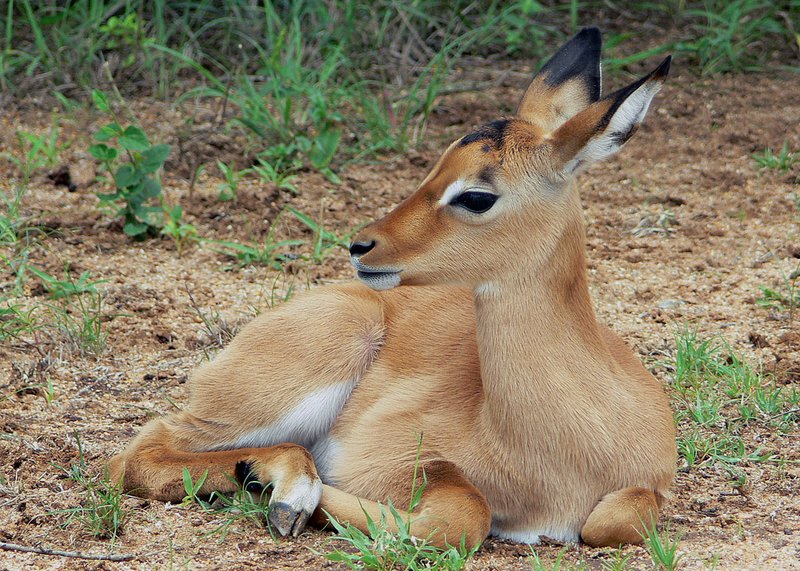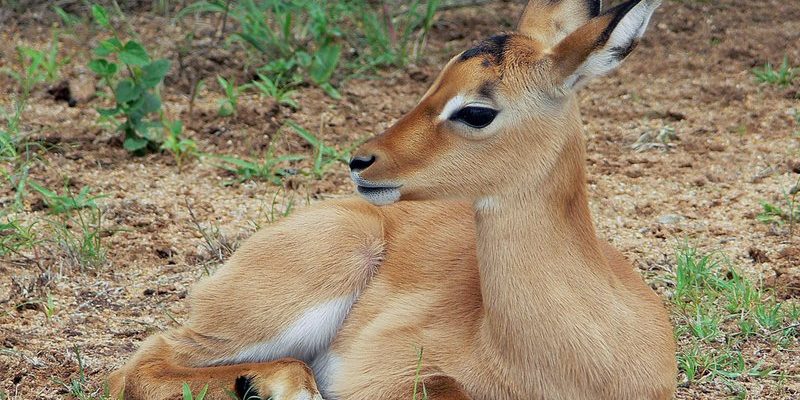
Understanding the differences between the impala and its look-alikes can help deepen our appreciation for wildlife. If you’ve ever found yourself captivated by an animal and wondered, “Is that an impala?” you’re not alone! In this article, we’ll explore ten animals that are similar to the impala and show you how to tell them apart. So, grab a cup of coffee, and let’s dive into this fascinating world of wildlife!
1. Gazelle
When you think of animals that resemble the impala, the gazelle is likely the first that comes to mind. In fact, both belong to the same family, Bovidae, and share a lot of similar characteristics. Gazelles are often seen prancing through the grasslands of Africa, boasting sleek bodies and long legs much like their impala cousins.
So, how can you tell a gazelle from an impala? Honestly, size plays a big role. Gazelles tend to be smaller and have more slender bodies. They also have longer, more curved horns compared to the impala’s straighter horns. Additionally, gazelles usually have lighter-colored coats, making them stand out in their environments in a different way than impalas.
2. Springbok
Another close relative, the springbok, is often mistaken for the impala due to its similar build. These speedy antelopes are native to the southern regions of Africa and are known for their remarkable leaping ability. Watching a springbok leap is truly a sight to behold—it’s like they defy gravity!
One key difference is that springboks have a distinctive white stripe along their flanks that you won’t find on impalas. Their coats are also more reddish-brown than those of the impala. Plus, springboks are known for their “pronking” behavior—an energetic leap into the air that serves as a way to show off their health and fitness.
3. Kudu
Now, let’s talk about the kudu. These antelopes are larger than both the impala and gazelle, boasting impressive spiral horns that can reach nearly four feet in length! They are usually found in wooded areas and are known for their striking appearance.
To spot the differences, look for the kudu’s unique markings. Kudus have vertical white stripes along their bodies that give them a very distinct look. In contrast to the impala’s smooth coat, kudus have a shaggy appearance, which adds to their charm. While impalas are more social and tend to form larger herds, kudus prefer a more solitary lifestyle or small family groups.
4. Sitatunga
The sitatunga is another intriguing animal that looks similar to the impala but has some notable differences. These swamp-dwelling antelopes are excellent swimmers and have long, splayed hooves that help them walk on muddy ground.
Unlike the impala, sitatungas have a more shaggy coat, often appearing in shades of brown or gray. Males also boast impressive spiral horns, similar to the kudu but shorter. When comparing them side by side, the sitatunga’s habitat in wetlands is a huge tell—while impalas are more common in dry grasslands.
5. Nyala
Let’s move on to the nyala, a lesser-known antelope that resembles the impala but has its own unique features. Males are particularly striking, with long, twisted horns and a dark brown coat adorned with white stripes.
The differences are often in their size and coloration. Male nyalas are much larger and bulkier than male impalas and have a more pronounced body shape. Females are more comparable in size, but they have a noticeable darker coloration than female impalas, making it easy to tell them apart.
6. Topi
The topi is another antelope that might catch your eye when you’re out exploring. They inhabit similar areas to the impala and are often seen in large groups. Their body shape is somewhat similar, but they stand out with their darker coats.
The key to distinguishing topis from impalas is their unique coloration. Topis typically have a reddish-brown body with a darker face and limbs. They also have a more pronounced hump on their back, which gives them a distinct profile. If you see a herd and notice a noticeably larger animal with a humpty-back shape, that’s likely a topi, not an impala.
7. Blackbuck
Now, let’s travel a bit outside Africa and look at the blackbuck, native to India. These antelopes share a slim body shape and graceful posture much like the impala. With their dramatic black and white coloring, they’re visually stunning.
To spot the differences, focus on the horns. Male blackbucks have long, spiraled horns that can grow over two feet in length, while impalas have shorter, straighter horns. Additionally, blackbucks display a unique coat pattern, where males are predominantly black with white patches, contrasting sharply against the impala’s uniform reddish-brown fur.
8. Thomson’s Gazelle
Thomson’s gazelle, often simply called “Tommy,” is another close cousin to the impala. These small, agile animals are named after explorer Joseph Thomson and are one of the most common gazelle species in Africa.
While they share a similar habitat and diet with impalas, Thomsons have a more compact body structure. They also have distinctive black stripes on either side of their bodies, which can help you quickly distinguish them from impalas. If you see a smaller antelope, check for those stripes and you’ll know you’re looking at a Thomson’s!
9. Aoudad (Barbary Sheep)
Let’s also consider the aoudad, or Barbary sheep, which might catch you off guard with its goat-like appearance. Though they aren’t antelopes, they share similar habitats and can occasionally be found in the same regions.
Aoudads have a thick, woolly coat and are more robust than impalas. Their long, curved horns can be another giveaway. They tend to be less graceful overall, and their sturdy appearance sets them apart from the lithe impalas. If you see an animal that looks stocky and brawny, you might be looking at an aoudad rather than an impala.
10. Waterbuck
Last but not least, let’s talk about the waterbuck. These antelopes prefer habitats near water and have a similar build to the impala. Their shaggy coats are more robust, perfect for their swampy homes.
Waterbucks have a distinctive white ring around their rear, which is quite different from the impala. You’ll also notice that they are larger and plumper, with a less elegant appearance. If you’re near a river or lake and spot a robust antelope with a prominent white circle, you’ve likely found a waterbuck!
In closing, the animal kingdom is full of fascinating creatures that share similarities yet stand apart in their unique ways. The impala has its charm, but knowing how to differentiate it from its look-alikes adds another layer to the joy of wildlife observation. Next time you’re out on an adventure, see if you can spot these other animals and appreciate the diversity they bring to our planet!

